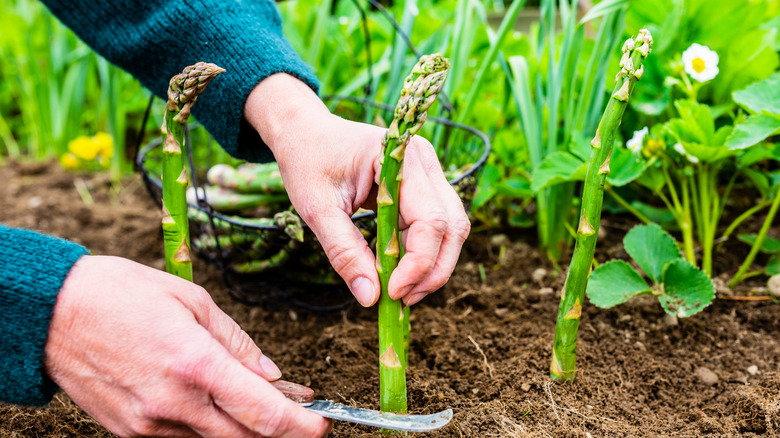If you’re planning to grow asparagus or have already started, seriously consider planting parsley alongside it. It’s a strategic move with significant benefits for your asparagus crop. Parsley, known for its strong scent, is more than just a culinary herb. It’s a magnet for beneficial insects, playing a crucial role in natural pest control in your garden.
If you’ve dealt with asparagus before, you know aphids are bad news. They attack your plants, stunting their growth and reducing your harvest. But with parsley around, hoverflies come to the rescue. They feed on those bothersome aphids attracted by the scent of parsley, keeping them in check. There’s more to parsley’s magic, though; the plant also lures in parasitic mini-wasps that have a unique approach to pest control. They lay their eggs inside aphids. When these eggs hatch, the larvae consume the aphids from within. It sounds a bit gruesome, but it’s nature’s way of keeping the aphid population under control.
But the role of parsley doesn’t end there. Its aromatic properties also serve as a deterrent to certain pests, like the asparagus beetle. This beetle, as its name suggests, specifically targets asparagus plants. It not only feeds on the spears but also lays eggs on them, leading to a cycle of destruction that can significantly reduce your crop yield. While there’s a lack of extensive scientific studies, the anecdotal evidence from numerous gardeners and the recommendations from many garden centers suggest that parsley’s strong scent acts as a natural deterrent for asparagus beetles.
Nature and growing conditions

When growing parsley alongside asparagus, it’s crucial to grasp the nature and growing conditions of these plants, as their successful coexistence hinges on understanding their individual needs. Think of asparagus as the long-term resident in your garden. It’s a perennial crop, which means once it settles in, it’s there to stay and release spears for a good 10 years, sometimes even more if you take great care of it. Asparagus loves a sunny spot and needs well-drained soil. It’s a bit of a space-lover, too, needing room for its deep roots to spread out. And like any long-term commitment, preparing its bed with lots of organic matter and keeping it weed-free goes a long way.
Now, parsley is more like the short-term yet impactful neighbor. It’s a biennial herb, living its full life cycle in just two years. In the first year, it’s all about growing those flavorful leaves. In the second year, it shifts gears to flowering and seeding, so you can just replant it after the first year if you want. Growing parsley isn’t a headache since the plant isn’t fussy — it likes rich soil and a bit of moisture and can handle both sunny and partly shady spots. It’s quite the adaptable companion for asparagus. Since parsley wraps up its life in two years, you’ll need to replant it every so often to keep its benefits going in your asparagus patch. This requires a small amount of additional effort every two years, but it is well worth the effort to ensure your asparagus keeps getting that natural pest control.
Key considerations if you want to grow parsley with asparagus
Companion planting isn’t just about throwing seeds in the ground and hoping for the best. During the planting phase, you really need to think about the placement. The right spacing and arrangement can make a world of difference in how your asparagus and parsley support each other. Let’s start with the basics: Keep your parsley at least 6 inches away from your asparagus. This distance is crucial because it respects the personal space of both plants. It allows them each to establish themselves comfortably without stepping on each other’s toes (or roots, in this case). Both plants need their fair share of nutrients and water, and this spacing ensures they’re not competing for these essentials.
Now, about the ways to plant parsley for optimal asparagus protection — you’ve got a couple of options here. One popular method is interplanting or intercropping. This means planting parsley in between your asparagus rows. It’s a smart move because it maximizes your garden space, and the parsley is strategically placed to ward off pests from your asparagus. On the other hand, it may be best to avoid planting parsley in rows parallel to your asparagus. This method works well if you have more space and want a more organized look in your garden. However, the insects may still have easier access to your asparagus plants.
One final note — if you’re starting with parsley seeds, remember they can be a bit slow to germinate. Patience is key. If you prefer a quicker start, go for parsley seedlings.
